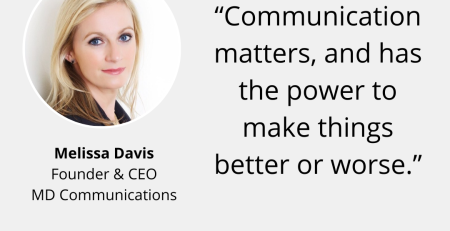Partner Katherine Howbrook explains why firms need to wary of their messaging around International Women’s Day.
Another year, another International Women’s Day, and all the “look at all the amazing women we have working at our firm” posts start rolling through our LinkedIn feeds.
Communications teams across the country start getting an influx of “what should we do for International Women’s Day?” questions, along with “we want to shout about International Women’s Day, but [select all that apply] our gender pay gap is still huge / we have an all-male Board / we don’t offer flexible or hybrid working, what should we do?”
My top tip this year is don’t fall into the trap of “woman-washing” your communications. In other words, don’t splash superficial efforts to appear gender-inclusive all over social media, without truly addressing the underlying issues.
Token gestures, such as sharing inspirational quotes or showcasing a few high-profile women within the organisation, may seem positive on the surface, but can be counterproductive and even harmful if not backed by genuine commitment and action.
Falling into the woman-washing trap does three things:
- Undermines authenticity: When companies engage in women-washing, it sends the message that their commitment to gender equality is only skin-deep. This can lead to scepticism among employees, customers, and stakeholders, eroding trust in the organisation’s dedication to fostering a diverse and inclusive workplace.
- Perpetuates stereotypes: Token gestures often reinforce existing gender stereotypes rather than challenging them. Celebrating a select few women in leadership positions may inadvertently suggest that these individuals are the exception rather than the rule, perpetuating the notion that women must be extraordinary to reach such heights.
- Misses the opportunity for real impact: Companies that focus on what they say before what they do miss the chance to address systemic issues, implement policies that support women, and create a workplace culture that genuinely values diversity and inclusion.
What to do instead – Walk the talk
Have a proper look in the mirror: Conduct a thorough audit of your organisation’s policies, practices, and culture. Identify areas where gender bias may exist and develop a strategy to address these issues systematically.
Make sure your “inclusive workplace” is genuinely inclusive: Ensure that your workplace actually makes diversity and inclusion possible. Implement inclusive hiring practices, offer professional development opportunities for all employees, and create mentorship programs that support the growth of underrepresented groups.
And, if you don’t offer flexible and hybrid working conditions and / or more equal parental leave policies regardless of gender and think you’re an inclusive employer – you’re not. If the women in your office are still having to balance their career aspirations with shouldering most caring responsibilities at home because their male partners cannot share the load, that is not equality. Equality at work is impossible without equality at home.
Transparency: Be transparent about your company’s commitment to gender equality. Share measurable goals and progress with your employees and stakeholders. Authentic communication means being honest about the challenges your organisation faces and the steps you are taking to overcome them. I would be much more impressed if you highlighted the challenges you’re facing and what you’re doing to address inequality at your organisation than seeing yet another (no doubt brilliant) female leader being rolled out while the Gender Pay Gap Bot on X (formerly Twitter) is simultaneously telling me about the 40% gender pay gap at your firm.
Invest in education and training: Provide ongoing education and training on gender bias and inclusivity for all employees. Equip your workforce with the tools to recognise, call out and address unconscious biases.
International Women’s Day can be a great opportunity for companies to demonstrate their commitment to gender equality, if they’re really walking the talk. Who knows, if everyone focused more on what they do before what they say, we may not need a “day” at all.












